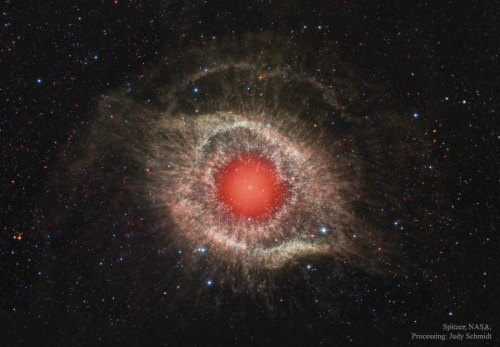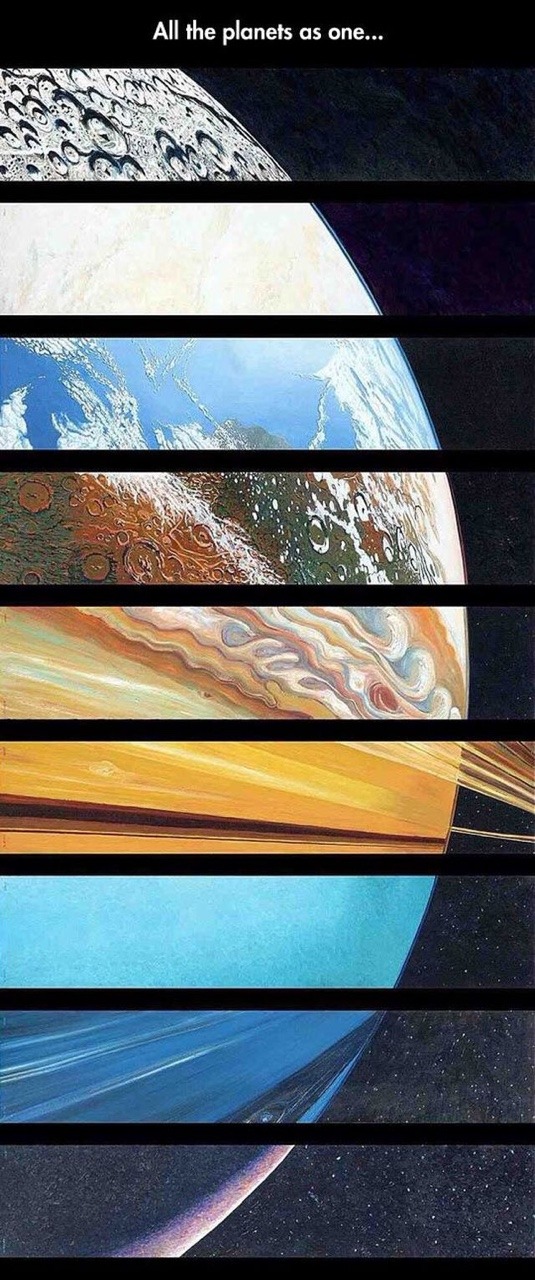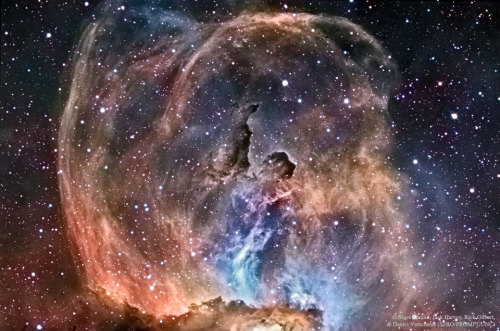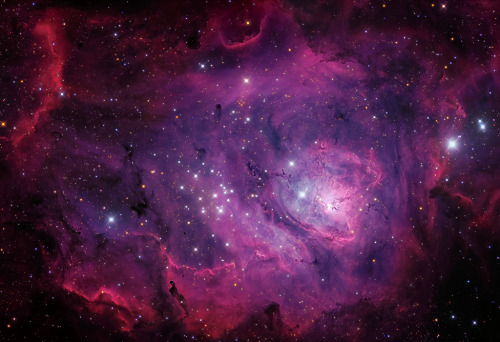Solar System: Things To Know This Week
Solar System: Things to Know This Week

It’s the time of year for summer break, swimming, and oh, yes storms. June 1 marks the beginning of hurricane season on the Atlantic coast, but we’re not alone. Our neighboring planets have seen their fair share of volatile weather, too (like the Cassini spacecraft’s view of the unique six-sided jet stream at Saturn’s north pole known as “the hexagon”).
This week, we present 10 of the solar system’s greatest storms.

1. Jupiter’s Great Red Spot
With tumultuous winds peaking at 400 mph, the Great Red Spot has been swirling wildly over Jupiter’s skies for at least 150 years and possibly much longer. People saw a big spot on Jupiter as early as the 1600s when they started stargazing through telescopes, though it’s unclear whether they were looking at a different storm. Today, scientists know the Great Red Spot has been there for a while, but what causes its swirl of reddish hues remains to be discovered. More >

2. Jupiter’s Little Red Spot
Despite its unofficial name, the Little Red Spot is about as wide as Earth. The storm reached its current size when three smaller spots collided and merged in the year 2000. More >

3. Saturn’s Hexagon
The planet’s rings might get most of the glory, but another shape’s been competing for attention: the hexagon. This jet stream is home to a massive hurricane tightly centered on the north pole, with an eye about 50 times larger than the average hurricane eye on Earth. Numerous small vortices spin clockwise while the hexagon and hurricane spin counterclockwise. The biggest of these vortices, seen near the lower right corner of the hexagon and appearing whitish, spans about 2,200 miles, approximately twice the size of the largest hurricane on Earth. More>
4. Monster Storm on Saturn
A tempest erupted in 2010, extending approximately 9,000 miles north-south large enough to eventually eat its own tail before petering out. The storm raged for 200 days, making it the longest-lasting, planet-encircling storm ever seen on Saturn. More >

5. Mars’ Dust Storm
Better cover your eyes. Dust storms are a frequent guest on the Red Planet, but one dust storm in 2001 larger by far than any seen on Earth raised a cloud of dust that engulfed the entire planet for three months. As the Sun warmed the airborne dust, the upper atmospheric temperature rose by about 80 degrees Fahrenheit. More >

6. Neptune’s Great Dark Spot
Several large, dark spots on Neptune are similar to Jupiter’s hurricane-like storms. The largest spot, named the “Great Dark Spot” by its discoverers, contains a storm big enough for Earth to fit neatly inside. And, it looks to be an anticyclone similar to Jupiter’s Great Red Spot. More >

7. Sun Twister
Not to be confused with Earth’s tornadoes, a stalk-like prominence rose up above the Sun, then split into about four strands that twisted themselves into a knot and dispersed over a two-hour period. This close-up shows the effect is one of airy gracefulness. More >

8. Titan’s Arrow-shaped Storm
The storm blew across the equatorial region of Titan, creating large effects in the form of dark and likely “wet” from liquid hydrocarbons areas on the surface of the moon. The part of the storm visible here measures 750 miles in length east-to-west. The wings of the storm that trail off to the northwest and southwest from the easternmost point of the storm are each 930 miles long. More >

9. Geomagnetic Storms
On March 9, 1989, a huge cloud of solar material exploded from the sun, twisting toward Earth. When this cloud of magnetized solar material called a coronal mass ejection reached our planet, it set off a chain of events in near-Earth space that ultimately knocked out an entire power grid area to the Canadian province Quebec for nine hours. More >
10. Super Typhoon Tip
Back on Earth, Typhoon Tip of 1979 remains the biggest storm to ever hit our planet, making landfall in Japan. The tropical cyclone saw sustained winds peak at 190 mph and the diameter of circulation spanned approximately 1,380 miles. Fortunately, we now have plans to better predict future storms on Earth. NASA recently launched a new fleet of hurricane-tracking satellites, known as the Cyclone Global Navigation Satellite System (CYGNSS), which will use the same GPS technology you and I use in our cars to measure wind speed and ultimately improve how to track and forecast hurricanes. More >
Discover more lists of 10 things to know about our solar system HERE.
Make sure to follow us on Tumblr for your regular dose of space: http://nasa.tumblr.com
More Posts from Weirdtalesanduniverse-blog and Others

Neptune and triton captured by Voyager 2 on their way out of the solar system in August 1989.
Credit: NASA / Voyager 2

Helix Nebula // NGC 7293


NGC 3576 // Statue of Liberty Nebula

A spiral in Andromeda

Saturn in Infrared from Cassini

M8 // Lagoon Nebula


Satürn




saturnz barz / we got the power / ascension / andromeda
-
 trouvailleeeee liked this · 4 years ago
trouvailleeeee liked this · 4 years ago -
 kaliforniakruisin liked this · 4 years ago
kaliforniakruisin liked this · 4 years ago -
 warrenbritt reblogged this · 4 years ago
warrenbritt reblogged this · 4 years ago -
 warrenbritt liked this · 4 years ago
warrenbritt liked this · 4 years ago -
 apolloanecdotes liked this · 4 years ago
apolloanecdotes liked this · 4 years ago -
 zyasli liked this · 5 years ago
zyasli liked this · 5 years ago -
 kentama1193 liked this · 5 years ago
kentama1193 liked this · 5 years ago -
 antedeus liked this · 5 years ago
antedeus liked this · 5 years ago -
 lovablehoseok reblogged this · 6 years ago
lovablehoseok reblogged this · 6 years ago -
 backupaccount107 reblogged this · 6 years ago
backupaccount107 reblogged this · 6 years ago -
 zenfroggi7 liked this · 6 years ago
zenfroggi7 liked this · 6 years ago -
 90selderichhorror liked this · 6 years ago
90selderichhorror liked this · 6 years ago -
 210z liked this · 6 years ago
210z liked this · 6 years ago -
 boredgdesigner liked this · 6 years ago
boredgdesigner liked this · 6 years ago -
 beaulamaie liked this · 6 years ago
beaulamaie liked this · 6 years ago -
 factfvckswithfiction liked this · 6 years ago
factfvckswithfiction liked this · 6 years ago -
 getalonereallywell liked this · 6 years ago
getalonereallywell liked this · 6 years ago -
 yessssssssssssssss liked this · 7 years ago
yessssssssssssssss liked this · 7 years ago -
 shadowman-99 liked this · 7 years ago
shadowman-99 liked this · 7 years ago -
 fammivolareancora-blog liked this · 7 years ago
fammivolareancora-blog liked this · 7 years ago -
 cthonisprincess liked this · 7 years ago
cthonisprincess liked this · 7 years ago -
 vintagevickyy liked this · 7 years ago
vintagevickyy liked this · 7 years ago -
 irenefowlkes liked this · 7 years ago
irenefowlkes liked this · 7 years ago -
 tunnelsystem liked this · 7 years ago
tunnelsystem liked this · 7 years ago -
 sleepygriffon2014 liked this · 7 years ago
sleepygriffon2014 liked this · 7 years ago -
 trippyskippy liked this · 7 years ago
trippyskippy liked this · 7 years ago -
 adamthegirl reblogged this · 7 years ago
adamthegirl reblogged this · 7 years ago -
 berbsblog liked this · 7 years ago
berbsblog liked this · 7 years ago -
 weirdtalesanduniverse-blog reblogged this · 7 years ago
weirdtalesanduniverse-blog reblogged this · 7 years ago -
 adamthegirl liked this · 7 years ago
adamthegirl liked this · 7 years ago -
 witchofthewine reblogged this · 7 years ago
witchofthewine reblogged this · 7 years ago -
 sleepy-dragons liked this · 7 years ago
sleepy-dragons liked this · 7 years ago -
 englishbunnyrocks liked this · 7 years ago
englishbunnyrocks liked this · 7 years ago
66 posts